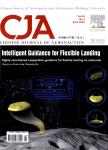版权所有:内蒙古大学图书馆 技术提供:维普资讯• 智图
内蒙古自治区呼和浩特市赛罕区大学西街235号 邮编: 010021

作者机构:School of Energy and Power EngineeringBeihang UniversityBeijing 102206China Research Institute of Aero-EngineBeihang UniversityBeijing 102207China
出 版 物:《Chinese Journal of Aeronautics》 (中国航空学报(英文版))
年 卷 期:2025年第38卷第3期
页 面:30-42页
核心收录:
学科分类:082502[工学-航空宇航推进理论与工程] 08[工学] 0825[工学-航空宇航科学与技术]
基 金:co-supported by the National Natural Science Foundation of China(Nos.52325602,52306036 and 52306035) the National Science and Technology Major Project of China(No.Y2022-II-0003-0006 and Y2022-II-0002-0005) the project funded by China Postdoctoral Science Foundation(No.2022M720346) supported by the Key Laboratory of Pre-Research Management Centre of China(No.6142702200101)
主 题:Transonic compressor linear stability analysis Input-output analysis Distorti on Casing treatrnent Inpedance boundary condition
摘 要:The influence of Impedance Boundary Condition (IBC) on transonic compressors is investigated. A systematic input–output analytical framework is developed, which treats the nonlinearities as unknown forcing terms. The framework is validated through the experiments of rotating inlet distortion within a low-speed compressor. The input–output method is subsequently applied to transonic compressors, including NASA Rotor37 and Stage35, wherein impedance optimization is studied along with the exploration of its fundamental mechanisms. The IBC is employed to model the effect of Casing Treatment (CT). The optimal complex impedance values are determined through predicted results and tested across a range of circumferential modes and forcing frequencies. The IBC significantly reduces the energy and Reynolds stress gain, notably at the first-order circumferential mode and within the Rotor Rotating Frequency (RRF) range. Output modes reveal that transonic compressors with fine-tuned impedance values exhibit a more confined perturbation distribution and redistribute the perturbations compared to the uncontrolled case. Additionally, the roles of resistance and reactance are elucidated through input–output analysis, and resistance determines the energy transfer direction between flow and pressure waves and modulates the amplitude, whereas reactance modifies the phase relationships and attenuates the perturbations.